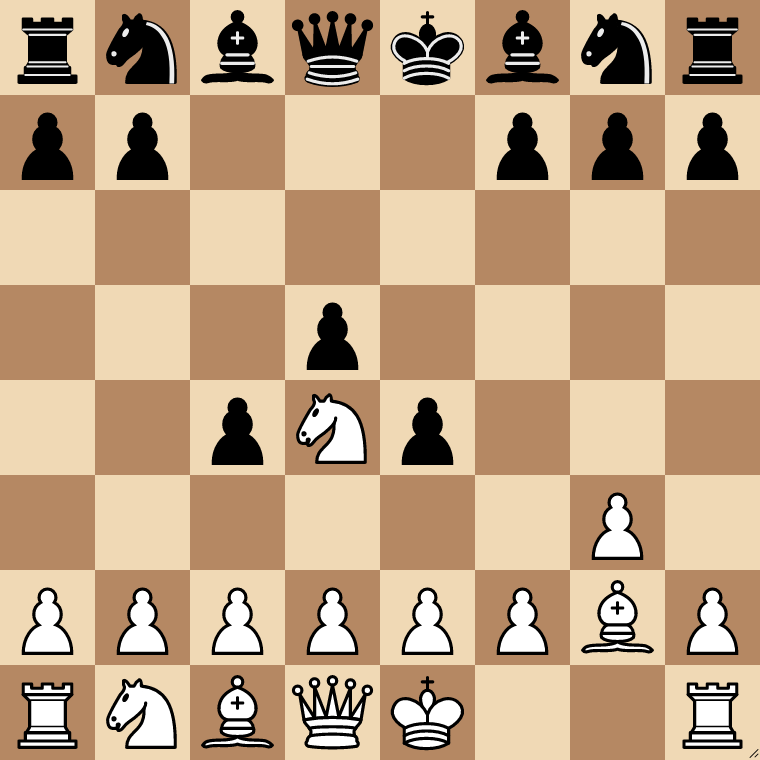What's the book about?
The book is – as the name suggests – a collection of Bent Larsen’s game. It wasn’t intended to be one book by Larsen, the first games are from Larsen’s game collection ‘50 Udvalgt Partier’ which contained 50 of his games from the years 1951-1969. The other games in the book are from various newspaper and magazine articles which Larsen has written over the years. In total the book contains 124 games going from 1951 to 1977.
What I liked
The most striking thing about Larsen’s games in the book is his opening play. Larsen is mostly known for 1.b3, but he also played many other openings which I have never seen before, my favourite among them
is his reverse Alekhine:
1.g3 d5 2.Bg2 e5 3.Nf3 e4 4.Nd4 c5 5.Nb3 c4 6.Nd4

Larsen played these uncommon openings to avoid the heavily analysed main lines. This is best illustrated by a comment he made on the game Torre-Larsen, 1975 where he played the Alekhine Defence and wrote ‘[…] Black avoids the most analyzed variations.’. I found it quite amusing that he avoided theory in the Alekhine Defence, which is already very rarely played.
His annotations to the games are lively and also very instructive. He explains most positions with words and only gives long variations in endgames and if the position is very sharp. While reading Larsen’s comments, I found it very striking how important a solid pawn structure and central pawns were for him. At least his comments make it seem like he would rarely capture away from the centre, which I found very interesting. How strong his views are in the annotations is best seen by the following quote ‘I’m afraid of having an isolated queen’s pawn‘.
What I disliked
As I mentioned in the beginning, the book wasn’t written as one book, it’s a collection of a book by Larsen and many articles. That’s why the depth of the annotations varies quite a bit. The annotations to the games get very sparse towards the end, which was a bit disappointing.
However, the added material can also be seen as a bonus, so these critiques shouldn’t be seen as me disliking the book for them.
My favourite games
I really enjoyed most of the games in the book, so I wanted to share some of them. These games are certainly not all of the good game, but I hope that they illustrate what kind of games you can expect from the book.
Summary
I really enjoyed playing through the games and reading Larsen’s comments to them. I usually use game collections as inspiration and Larsen’s game are perfect for that. Due to his creative opening play, each game feels fresh and you never have games where you have to go through 15 moves of Ruy Lopez theory before the real fight starts.
Larsen’s annotations are also a joy to read, so I would recommend this book to everyone who wants to see a wider variety of openings then in game collections like Fischer’s ‘My 60 Memorable Games’.